How Shift Workers Can Improve Sleep Quality
Introduction
Shift work is a modern necessity—but it often comes at a biological cost. When your schedule flips between nights, early mornings, or rotating shifts, your body’s natural rhythms struggle to keep up. The result? Fatigue, irritability, poor concentration, and that heavy, foggy feeling that never seems to lift.
But sleep deprivation doesn’t have to be inevitable. With the right strategies—both biological and behavioral—you can retrain your circadian rhythm, reduce fatigue, and wake up feeling more human again.
This guide explains how shift work disrupts sleep, and more importantly, what you can do about it—from supplement timing and light exposure to nervous system training and nighttime rituals that actually work.
Looking for supplements for This? Click here.
🧭 Why Shift Work Disrupts the Body
Your body runs on an internal clock called the circadian rhythm—a 24-hour cycle that regulates sleep, hormones, temperature, digestion, and even mood.
When you work against this rhythm (for example, working nights or alternating shifts), your brain receives conflicting signals: darkness tells it to sleep, work tells it to stay alert. Over time, this mismatch can lead to Shift Work Sleep Disorder (SWSD)—characterized by insomnia, chronic sleep debt, and excessive daytime sleepiness.
⚙️ The Biological Mechanics of Shift Disruption
Melatonin suppression
Exposure to bright light at night blocks melatonin—the hormone that signals your body to sleep.
Cortisol confusion
Normally, cortisol peaks in the morning to wake you up. Night work flips this rhythm, causing energy crashes or nighttime alertness at the wrong times.
Temperature misalignment
Core body temperature naturally drops at night. Working during that drop increases fatigue and impairs reaction time.
Digestive stress
Eating at odd hours confuses insulin rhythms and can cause inflammation and gut distress.
🌞 Step 1: Master Your Light Exposure

Light is the strongest signal your body uses to set its internal clock. Managing when and how you’re exposed to it can dramatically improve sleep and alertness.
💡 Control Light Timing
If you work nights:
Bright light during your shift keeps you alert.
Wear blue-light–blocking glasses on your way home.
Keep your bedroom dark and cool when sleeping.
If you work early mornings:
Use bright light in the first two hours of your shift.
Limit evening screen use to help melatonin rise naturally.
If you work rotating shifts:
On transition days, gradually shift bedtime by 1–2 hours to help your body adapt.
🌅 Use a Light Therapy Box
A 10,000-lux light box used for 20–30 minutes at the start of your “wake” period helps synchronize your brain.
Best time to use:
Night workers: At the beginning of your shift.
Early shift workers: Right after waking up.
🌑 Make Darkness Sacred
When it’s time to sleep, treat darkness like medicine:
Blackout curtains or an eye mask
No phone lights or TVs
Cool room (18–20°C / 65–68°F)
Darkness tells your body: “Now it’s safe to rest.”
💤 Step 2: Optimize Sleep Environment
Since you’re sleeping at non-traditional hours, your environment must compensate for what your circadian rhythm can’t.
🛏️ Temperature
Lower temperatures help trigger melatonin and slow brain activity.
Ideal range: 18°C–20°C (65°F–68°F)
If you’re sleeping during the day, keep air flowing or use a cooling fan for comfort.
🔇 Sound Control
Noise is a top reason shift workers fail to reach deep sleep.
Solutions:
White noise machines or apps (fan, rain, brown noise)
Earplugs or sleep headphones
Inform family/roommates of your “quiet hours”
🌬️ Scent and Atmosphere
Aromatherapy can enhance your brain’s rest cues. Try:
Lavender 🌸
Chamomile 🌼
Cedarwood 🌲
Diffuse 30 minutes before sleep or apply diluted essential oil to wrists.
💡 Visual Cues
Even subtle light signals “wake up” to the brain. Seal window gaps or wear an eye mask.
Some shift workers use red night lights—dim enough to see but melatonin-friendly.
🧘 Step 3: Calm the Nervous System
Working against your body clock keeps your sympathetic nervous system (fight-or-flight mode) chronically active. You must deliberately shift into parasympathetic mode (rest-and-digest) before bed.
🌬️ Breathwork for Sleep
Try the 4-7-8 technique:
Inhale for 4 seconds
Hold for 7
Exhale for 8
This increases vagal tone and signals your heart rate to slow down.
🧘 Progressive Muscle Relaxation
Start from your toes, tensing and releasing each muscle group. By the time you reach your face, tension melts away.
🪷 Mindful Journaling
Before bed, write:
“What went well today”
“One thing I can release”
This helps stop the mental replay loop that often plagues night workers.
Want to try Breathwork? Click Here.
🍎 Step 4: Support Sleep with Nutrition
Your eating schedule influences your sleep rhythm just as much as light.
⏰ Time Your Meals
Avoid heavy meals right before bed—digestion raises body temperature and delays sleep.
Best timing:
Light snack 1–2 hours before sleeping (e.g., yogurt, banana, oats).
Full meals spaced during wake periods.
🥦 Foods That Support Sleep
Choose foods that naturally promote melatonin and serotonin:
Bananas 🍌 (magnesium + tryptophan)
Tart cherries 🍒 (natural melatonin source)
Almonds 🌰 (magnesium + healthy fats)
Oatmeal 🌾 (complex carbs promote tryptophan uptake)
🚫 Foods and Drinks to Avoid
Caffeine after 4–6 hours before bed ☕
Alcohol (may make you sleepy but disrupts deep sleep) 🍷
Spicy or fatty foods (raise body temperature) 🌶️
🌿 Step 5: Strategic Supplement Support
When your schedule defies biology, supplements can help bridge the gap safely.
🌙 Melatonin (0.3–1 mg)
Small doses are best. High doses can cause grogginess or vivid dreams.
Use when: Sleeping during the day or transitioning between shifts.
💧 Magnesium Glycinate
Supports GABA activity, muscle relaxation, and nervous system calm.
Dose: 200–400 mg 30 min before bed.
🍵 L-Theanine
Balances caffeine intake (for those using it on night shifts) and promotes mental relaxation without drowsiness.
Dose: 100–200 mg.
🌿 Ashwagandha
Regulates cortisol and supports resilience to circadian stress.
Dose: 300–600 mg extract (e.g., KSM-66).
💊 Vitamin D
Night workers often develop vitamin D deficiency due to lack of sunlight.
Dose: 2000–4000 IU with your first “morning” meal.
Looking for supplements for This? Click here.
⚖️ Step 6: Manage Caffeine and Energy Smartly

Caffeine can help with alertness during shifts—but it’s a double-edged sword.
☕ Use It Strategically
Consume caffeine only in the first half of your shift.
Avoid after 4–6 hours before your intended bedtime.
🌿 Natural Alternatives
If you want smoother energy, consider:
Green tea (contains calming L-theanine)
Rhodiola rosea (adaptogen for focus without crashes)
CoQ10 or B-vitamins (support mitochondrial energy)
🧩 Step 7: Build a Consistent Sleep Routine
Your body loves predictability—even if your work schedule isn’t predictable.
🕒 Create a Sleep “Anchor”
Choose one consistent wake-up time or sleep block that remains stable no matter your shift. This helps stabilize your circadian baseline.
🌙 Develop a Ritual
Your bedtime ritual should send one clear message: “It’s time to rest.”
Example:
Shower or bath (lowers body temperature)
Herbal tea (chamomile, lemon balm, or valerian)
Dim lights or red lamp
5 minutes of deep breathing
Lavender scent on pillow
Consistent soundtrack (rain, ocean, pink noise)
Repeat this ritual every time you prepare for sleep—your brain will associate it with calm.
🧘 Step 8: Mind-Body Therapies for Shift Sleep Recovery
When your system is chronically overstimulated, mind-body therapies help reset biological patterns.
🧠 CBT-I (Cognitive Behavioral Therapy for Insomnia)
Helps break the thought loop: “I’ll never sleep well because I work shifts.”
Over time, this reprograms how your brain perceives rest windows.
🌸 Yoga and Gentle Movement
Yoga before bed relaxes tight muscles and increases parasympathetic activity.
Focus on stretches for hips, back, and legs (these hold tension from standing long hours).
💬 Breath-Focused Therapy
Practices like SOMA Breath or coherent breathing retrain your brain to regulate stress even in unpredictable work environments.
Looking for online therapy ? Click Here.
🧠 Step 9: Protect Mental Health
Shift work is linked to higher rates of anxiety, depression, and social isolation. Prioritizing mental well-being is just as important as managing sleep.
❤️ Keep Social Rhythms
Stay connected even if your hours differ. Schedule regular check-ins with family and friends to maintain emotional balance.
📅 Plan Recovery Days
After several consecutive shifts, plan at least one full “reset day” with no alarms, caffeine, or screen time.
🧘 Therapy and Support
If you’re feeling burnout, therapy can help you build coping mechanisms and improve emotional resilience.
🕰️ Step 10: Rotate Wisely (If Possible)
If you can influence your schedule, aim for forward-rotating shifts—morning → evening → night.
This rotation aligns better with natural circadian drift and is easier to adapt to.
Avoid alternating back and forth (e.g., night → day → night), which prevents full adjustment.
🌿 Example Routine for Night Shift Workers
| Time | Habit | Why It Works |
|---|---|---|
| 6:30 AM | Leave work wearing sunglasses | Reduces melatonin suppression |
| 7:00 AM | Light breakfast, magnesium, short wind-down | Prepares body for sleep |
| 8:00 AM | Sleep in cool, dark room (use blackout curtains) | Mimics nighttime |
| 2:00 PM | Wake up, hydrate, gentle movement | Gradual reactivation |
| 4:00 PM | Main meal | Stabilizes energy |
| 6:00 PM | 20 min light exposure or walk | Signals "daytime" |
| 10:00 PM | Start work, moderate caffeine | Alertness boost |
| 2:00 AM | Light snack, hydration | Prevent blood-sugar dip |
| 6:00 AM | Begin winding down again | Reinforce rhythm |
🌕 Step 11: Combine Technology and Nature
Technology can either destroy or support your sleep. Use it consciously.
🕯️ Sleep Tech That Helps
Smart light bulbs: Gradually dim lights to mimic sunset.
Blue-light filters: Apps like f.lux or Night Shift reduce screen glare.
Smartwatches or Oura rings: Track recovery and circadian trends.
🌿 Balance with Nature
Spend time outdoors whenever possible. Even 20 minutes of daylight exposure regulates mood and sleep hormones.
🧩 Step 12: The 3Rs of Shift Worker Sleep Strategy
Recondition – Build consistent pre-sleep rituals
Reset – Use light, temperature, and supplements to sync rhythms
Recover – Schedule downtime to heal from circadian strain
You’re not just “powering through”—you’re rebuilding physiological resilience.
❤️ Final Thoughts
Shift work may go against nature—but your body is adaptable when given the right tools.
By combining light control, nervous system balance, nutrient support, and emotional care, you can transform chaotic schedules into stable rest patterns.
Sleep isn’t just a break between shifts—it’s the foundation that keeps you strong, calm, and capable. 🌙✨
📚 References
Åkerstedt, T. (2003). Shift work and disturbed sleep/wakefulness. Occupational Medicine, 53(2), 89–94.
Wright, K. P. et al. (2013). Impact of sleep loss on circadian physiology and performance. PNAS.
Boivin, D. B., & Boudreau, P. (2014). Impacts of shift work on sleep and circadian rhythms. Pathologie Biologie, 62(5).
Goel, N., Basner, M., Rao, H., & Dinges, D. (2013). Circadian rhythms, sleep deprivation, and human performance. Progress in Molecular Biology and Translational Science.
Chandrasekhar, K. et al. (2012). Ashwagandha root extract and stress resilience. Indian Journal of Psychological Medicine.
Ferracioli-Oliveira, A. P. et al. (2020). Magnesium and sleep quality: a systematic review. Nutrients.
Morin, C. M., & Benca, R. (2012). Chronic insomnia and circadian disruption. The Lancet.
Porges, S. W. (2011). The Polyvagal Theory. W. W. Norton & Company.
Related Posts
-

Supplements to Stay Calm Before Public Speaking
Breathwork is one of the simplest yet most powerful tools for calming pre-performance stress 🌬️. By slowing and deepening your breathing, you lower cortisol, steady your heartbeat, and re-center your mind. Learn the science behind how controlled breathing activates your parasympathetic nervous system — helping you speak, perform, or focus with grounded confidence. 🌿
-
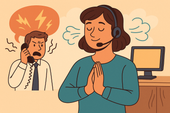
How to Handle Customer Service Stress Without Losing Your Cool 💬🧘♀️
Customer service can test even the calmest person’s patience. 😤 Learn how to handle difficult clients and daily pressure without losing your cool — through better mindset management, calming breathwork, and practical communication tools. Stay grounded, protect your energy, and transform stress into strength. 🌿
-
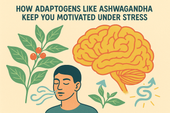
How Adaptogens Like Ashwagandha Keep You Motivated Under Stress
Feeling overwhelmed and unmotivated? 🌿 Discover how adaptogens like Ashwagandha can help you stay centered, focused, and energized under stress. Learn how supplements, breathwork, and therapy work together to restore your natural motivation and help you thrive — even during life’s toughest moments. 💪✨
-
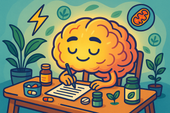
Supplements That Support Long-Term Productivity Without the Crash ⚡🌿
Cortisol — your body’s main stress hormone — can be both your best friend and worst enemy. ⚡ When balanced, it keeps you focused, energized, and ready to act. But when it stays high for too long, it leads to fatigue, anxiety, and emotional crashes. Learn how to regulate cortisol naturally through supplements, sleep, and stress management to maintain calm, steady productivity. 🌿
-
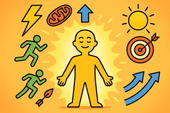
Why Energy Levels and Motivation Go Hand in Hand ⚡🧠
B-vitamins are the brain’s spark plugs 🔋. They turn food into fuel, support neurotransmitter production, and keep your mood, energy, and focus balanced. Learn how vitamins like B6, B9, and B12 work together to power the nervous system, reduce fatigue, and keep motivation high. 🌿
-

The Science of Motivation: Can Nootropics Help You Stay Focused? 🧠⚡
Nootropics are nature’s tools for sharper thinking and sustainable focus 🧠🌿. From Rhodiola and Lion’s Mane to L-theanine and Bacopa, these brain-boosting compounds enhance motivation, memory, and stress resilience. Learn the science behind how nootropics work — and how to use them safely for peak mental performance and clarity. ⚡
-

How Natural Supplements Can Boost Your Daily Drive
Cortisol is your body’s main stress hormone — powerful, necessary, but often misunderstood. ⚡ When balanced, it keeps you alert and energized; when chronically elevated, it drains mood, motivation, and focus. Learn how to regulate cortisol naturally through nutrition, supplements, and calming lifestyle habits for steady energy and emotional balance. 🌿
-
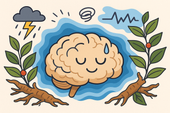
Ashwagandha for Stress and Low Mood
Breathwork is more than a relaxation tool — it’s a way to rewire your nervous system. 🌬️ Through intentional breathing, you can reduce stress hormones, improve focus, and calm emotional turbulence. This guide explores the science of breathwork and its powerful effects on mental clarity, resilience, and emotional regulation. 🌿
-
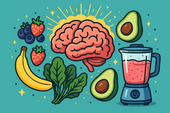
Mood-Boosting Smoothie Recipes
Your blood sugar affects far more than energy — it influences mood, focus, and emotional stability too 🍎. Learn how maintaining balanced glucose levels supports brain health, reduces anxiety, and prevents emotional crashes. Discover the foods and habits that keep your mind calm and your energy steady throughout the day. 🌿
-
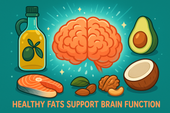
How Healthy Fats Support Brain Function
Your brain thrives on healthy fats 🧠💧. From omega-3s to MCTs, the right fats enhance focus, memory, and mood while protecting against inflammation and aging. This article explores how good fats — like those from olive oil, salmon, avocado, and nuts — build sharper thinking, emotional balance, and lasting brain vitality. 🌿
-
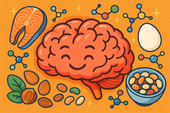
The Role of Protein in Mental Clarity
Protein isn’t just for muscles — it’s for your mind. 🧠 This guide explores how amino acids from high-quality protein fuel neurotransmitters, stabilize mood, and sharpen focus. Learn how balanced protein intake supports dopamine, serotonin, and energy regulation to boost mental clarity and emotional stability naturally. 🍳🌿
-
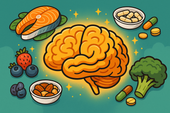
Nutrients That Support Emotional Stability
Your emotions are built from nutrients as much as from thoughts 🌿. This science-backed guide reveals the vitamins, minerals, and healthy fats that stabilize mood and reduce stress — from B-vitamins and magnesium to omega-3s and probiotics. Learn how balanced nutrition supports neurotransmitters, strengthens resilience, and promotes lasting calm and clarity 🧠✨.
-
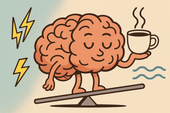
How Caffeine Affects Your Mood ☕
Your morning coffee might lift your spirits — but what’s really happening inside your brain? ☕ This in-depth guide explores how caffeine affects mood, motivation, dopamine, and stress. Learn how to enjoy caffeine mindfully without triggering anxiety, burnout, or emotional crashes. Discover the science behind your energy highs and lows — and how to find calm, sustainable focus. 🌿
-
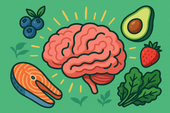
The Best Anti-Inflammatory Diet for Mental Health
Inflammation doesn’t just affect your body — it impacts your mood, focus, and emotional resilience too 🌿. This comprehensive guide reveals how an anti-inflammatory diet can support mental health by reducing neuroinflammation, balancing gut bacteria, and stabilizing blood sugar. Learn which foods to eat (and which to avoid) to protect your brain, boost serotonin, and promote lasting calm. 🧠✨
-
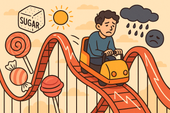
Why Sugar Spikes Can Worsen Depression
Sugar highs can make you feel good for a moment — but what comes next can fuel emotional crashes and deepen depression 🍭. This article explains how blood sugar spikes disrupt brain chemistry, increase inflammation, and destabilize serotonin. Learn how food, supplements, breathwork, and therapy can help you break the sugar–mood cycle and restore lasting emotional balance 🌿.
-
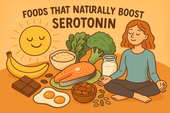
Foods That Naturally Boost Serotonin
Serotonin isn’t just a brain chemical — it’s your body’s built-in mood stabilizer 🌞. This in-depth guide explores how natural foods like salmon, eggs, bananas, and dark chocolate can elevate serotonin levels, while gut health, key nutrients, supplements, breathwork, and therapy create the perfect synergy for calm and emotional balance. Learn how to support your mind through diet, lifestyle, and mindset — naturally. 🌿
-
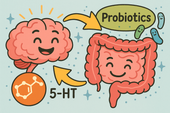
Probiotics for Mood Balance
-
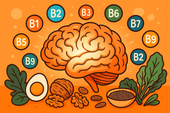
B-Vitamins and Their Role in Mental Health
Methylation is one of your body’s most important biochemical processes — influencing mood, energy, and focus. Powered by B-vitamins like B6, B9, and B12, it helps your brain create serotonin, detox efficiently, and maintain emotional balance. 🌿
-
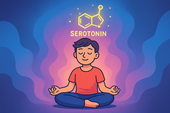
5-HTP for Serotonin Support
Calm isn’t just an emotion — it’s a physiological state where your body and mind finally sync in peace. By slowing your breath, softening your thoughts, and creating safety within, you restore the deep relaxation your nervous system craves. 🌿
-
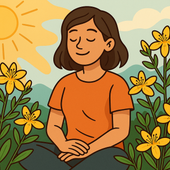
St. John’s Wort for Mild Depression
Antidepressants can be life-changing for many — but understanding how they work and what natural options like St. John’s Wort can complement them is key. Learn how both approaches affect brain chemistry, mood balance, and long-term emotional wellness. 🌿
-

SAM-e: A Natural Mood Booster
Emotional regulation is the art of staying calm and grounded, even when life feels chaotic. By balancing your brain, body, and breath, you can respond with clarity instead of reacting from stress — building real emotional resilience and inner peace. 🌿
-

Rhodiola Rosea for Emotional Resilience
Neuroplasticity is your brain’s ability to grow, adapt, and heal — even after stress or trauma. Every thought, emotion, and habit reshapes your neural pathways, helping you build stronger emotional resilience, sharper focus, and lasting mental balance. 🌿
-
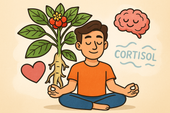
Ashwagandha for Stress and Low Mood
Adaptogens are nature’s stress balancers — powerful herbs like ashwagandha, rhodiola, and reishi that help your body adapt to tension, fatigue, and change. By regulating cortisol and supporting your nervous system, they build calm focus and emotional resilience from the inside out. 🌙
-
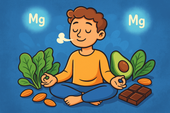
Magnesium’s Role in Emotional Regulation
Neuroscience helps us understand why we feel, think, and react the way we do. From brain chemistry and neural circuits to stress responses and emotional learning, the science of the brain reveals how our minds can heal, grow, and find balance. 🌿
-

Omega-3 Fatty Acids and Emotional Well-Being
Nutrients aren’t just fuel — they’re communication signals that tell your brain and body how to function. From magnesium and vitamin D to omega-3s and B vitamins, the right mix of nutrients helps calm your mind, balance hormones, and support emotional and physical well-being. 🌙
-

The Role of Tryptophan in Sleep Health
Mental health isn’t just the absence of illness — it’s the foundation of calm, focus, and emotional resilience. From managing stress and anxiety to nurturing self-compassion, understanding your mental well-being is the first step toward a balanced, more peaceful life. 🌿
-

Nutrients That Promote Nighttime Relaxation
Potassium does more than balance fluids — it also helps your body and mind relax at night. By calming nerves, reducing muscle tension, and supporting steady heart rhythm, potassium-rich foods like bananas, sweet potatoes, and coconut water can promote deeper, more restful sleep. 🌙
-

Sleep-Friendly Smoothie Recipes
Melatonin is your body’s natural sleep signal — a hormone that tells your brain when it’s time to rest. Learn how melatonin works, which foods and habits boost its production, and how to use it wisely for deeper, more restorative sleep without dependence. 💤
-
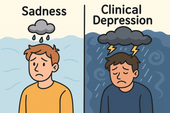
The Difference Between Sadness and Clinical Depression
Your emotions aren’t just in your mind — they’re written in your brain chemistry. Serotonin, dopamine, and GABA work together to regulate mood, motivation, and calm. When they fall out of balance, you may feel anxious, fatigued, or low. Learn how these brain chemicals influence your mental health and what you can do to restore harmony naturally. 🌿
-
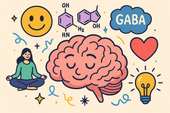
How Brain Chemistry Influences Mood
Your brain is a symphony of neurotransmitters — serotonin, dopamine, GABA, and more — working together to shape how you think and feel. When they’re balanced, you experience calm focus and emotional stability. When they’re not, mood swings and fatigue can follow. Learn how to naturally support these vital messengers for better mood and mental clarity. 🌿
-
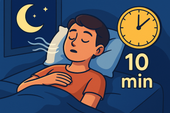
How to Fall Asleep in Under 10 Minutes
The military knows a few secrets about falling asleep fast — and they work even in chaos. This article explores the science behind rapid relaxation, including the famous “Military Sleep Method,” which teaches your body to shut down stress and rest on command. Learn how discipline, breath, and focus can help anyone fall asleep in minutes. 🌙
-
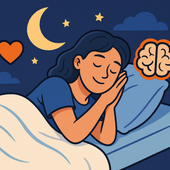
Why Emotional Resilience Improves Sleep
Emotional resilience isn’t just about mental strength—it’s also a key ingredient for better sleep. When your emotions are balanced, your body releases fewer stress hormones, your mind quiets faster, and your sleep becomes deeper and more restorative. Learn how to cultivate calm through mindset, breathwork, and daily habits. 🌙
-
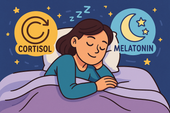
The Connection Between Stress Hormones and Sleep
Chronic stress can quietly reshape your body’s chemistry, raising cortisol, disrupting sleep, and draining your energy. This guide explores how long-term stress affects your nervous system, hormones, and rest—and how to restore calm through breathwork, nutrition, and daily recovery rituals. 🌿
-
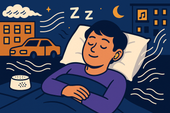
How to Sleep Better in a Noisy Environment
Living in a noisy area doesn’t mean sacrificing your rest. Learn practical and natural strategies to sleep better in loud environments—from using sound masking and breathwork to creating calming rituals that help your brain tune out the chaos. Find inner silence even when the world outside won’t quiet down. 🌙
-
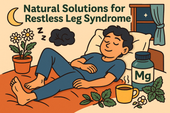
Natural Solutions for Restless Leg Syndrome (RLS)
Struggling to sleep deeply and wake refreshed? This soothing guide explores how the body restores itself during quality sleep—and how to support it naturally. Learn about the science of rest, the role of nutrients, and the rituals that promote deep, uninterrupted slumber. 🌙
-
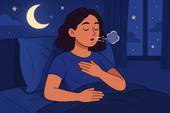
How to Overcome Middle-of-the-Night Anxiety
Middle-of-the-night anxiety can make even the calmest mind spiral into worry. This guide reveals practical, evidence-based techniques to help you stop the 3 A.M. overthinking loop—from breathwork and journaling to herbal supplements and therapy-based tools. Learn to retrain your nervous system and find peace when the world is asleep. 🌙
-

The Perfect Evening Herbal Blend
Discover the calming power of nature in your teacup. The perfect evening herbal blend combines chamomile, lemon balm, lavender, and adaptogens like ashwagandha to relax your body and quiet your mind before bed. Learn how to craft and customize a soothing, sleep-enhancing tea ritual that helps you unwind, restore, and wake up refreshed. 🌙
-
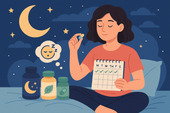
How to Cycle Sleep Supplements for Maximum Effectiveness
Wondering why your sleep supplements stop working after a while? This guide breaks down how to cycle sleep aids like melatonin, magnesium, and ashwagandha for consistent, long-term results. Learn when to rest your body, how to prevent tolerance, and what natural methods—like breathwork and therapy—enhance your sleep cycles. 🌙
-
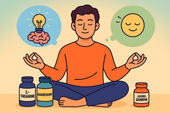
The Best Supplements for Both Relaxation and Focus
Calm your mind and sharpen your focus with the perfect blend of natural supplements. From L-theanine and magnesium to Rhodiola and Lion’s Mane, this science-based guide shows how to achieve relaxation and clarity at the same time. Discover stacks that support your nervous system, balance mood, and keep your mind laser-focused without the crash. 🌿
-
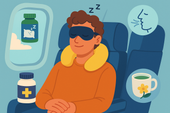
How to Sleep Better During Travel
Traveling can be thrilling—but sleepless nights can ruin even the best trips. From supplements like magnesium and melatonin to soothing breathwork and therapy-based techniques, this guide shows you how to sleep deeply on planes, in hotels, or across time zones. Learn to calm your body, reset your circadian rhythm, and build rest rituals that work anywhere in the world 🌙
-
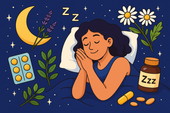
Improving Sleep in Menopause with Supplements
Menopause can make peaceful sleep feel impossible — but balance is within reach 🌿. This article explores how supplements like magnesium, ashwagandha, and black cohosh can ease night sweats, calm the mind, and restore your natural sleep rhythm during hormonal changes.
-
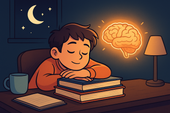
Sleep Support for Students During Exams
Exam stress can make it hard to rest — but sleep is what helps you perform your best 💤. This article explains how to improve sleep quality during exams through better study habits, natural supplements, breathwork, and therapy tools to calm the mind and sharpen focus.
-

Rest Strategies for Entrepreneurs
Entrepreneurs often burn out chasing their vision — but rest is the real fuel for success 🌙. This article explores science-backed recovery strategies for founders, including sleep, breathwork, therapy, and nutrition techniques that sharpen creativity and sustain performance.
-

How Sleep Affects Athletic Recovery
Sleep is where strength is built. 💤 This article explores how deep sleep drives muscle recovery, hormonal balance, and athletic performance — plus how supplements like magnesium, melatonin, and ashwagandha can enhance overnight repair and boost training results.
-

Better Sleep for People with Chronic Pain
Living with chronic pain makes sleep feel impossible — but it’s not. 🌙 This article explores how pain disrupts rest and how to rebuild your sleep through gentle breathwork, calming nutrition, therapy, and supplements that help your body relax and heal.
-

How to Sleep Better During Seasonal Changes
Seasonal shifts can throw your sleep off balance 🌦️. This article explains how light, temperature, and hormones change with the seasons — and how to restore your rhythm naturally through melatonin-supportive foods, breathwork, and therapy for emotional balance.
-

Foods That Naturally Boost Melatonin
Want to fall asleep faster without supplements? 🌙 This article explores how foods like tart cherries, pistachios, and kiwi naturally boost melatonin, the hormone that regulates sleep. Learn how to build an evening meal plan — plus simple rituals like breathwork and herbal tea — to improve rest and reset your circadian rhythm.
-

The Role of Herbal Tea in Relaxation
Herbal tea is more than comfort in a cup 🍵 — it’s nature’s gentle way to calm the mind and relax the body. This article explores how teas like chamomile, lavender, and lemon balm support stress relief, sleep quality, and emotional balance — plus how to pair them with magnesium, breathwork, and mindful rituals for deeper peace.
-

Lavender Extract and Its Calming Effects
Lavender extract is one of nature’s most soothing remedies 🌸. This article explores how lavender calms the nervous system, lowers cortisol, and improves sleep — plus how to combine it with magnesium, breathwork, and therapy for deep relaxation and emotional balance.

















































